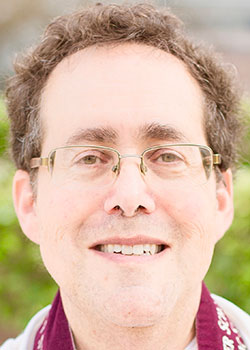Every culture identified insiders and outsiders, those select few who represent communal ideals and the despised few whose differences make them seem threatening to the rest of us. For the vast majority, straddled between the ideals and the rejects, life is an effort to seem more like the former and to distance us from the latter. The emotional security of the majority seems to require construing some unfortunates as demons, rather than as fellow human beings simply trying their best to get along.
A universal human weakness, this drive to demonize as a way of feeling better about ourselves, is not some recent innovation. Rather, it is found in all societies, and even in our holy Torah. What is surprising is not that it is there, but how an enlightened Jewish tradition responded to the temptation to label and to expel.
In Parashat Naso, the Torah relates God’s command to the Israelites “to remove from camp anyone with an eruption or a discharge and anyone defiled by a corpse. Remove male and female alike; put them outside the camp so that they do not defile the camp of those in whose midst I dwell.”
This passage contains a troubling thought: That we should respond to those with physical differences or troubles by banishing them from the midst of the community. Can it be that the God of the Universe is repulsed by physical deformities or imperfections? Does God really want us to expel these people to the fringes of our communities? Can we blame them, then, when they walk away from their Judaism if their experience of Judaism is one of rejection and expulsion?
This topic is explored in Midrash Ba-Midbar Rabbah, the ancient rabbinic commentary to the Book of Numbers: “When the Israelites came to the wilderness of Sinai, God said, ‘Is it consonant with the dignity of the Torah that I should give it to a generation of cripples?” The modern reader can’t help but cringe at the portrayal of a God so callous to those of us who are unable to walk, or hear, or see, or write without mechanical assistance. Is this the God of compassion and mercy and love we pray to on Shabbat and our Holy Days? In fact, the Midrash sets us up to expect God to justify their expulsion.
Yet that’s not what happens. The Midrash continues, “What did God do? God bade the angels come down to Israel and heal them.” Rather than expelling the Israelites who were disabled, God effected a way to cure them and reintegrate them into the community.
We too need to find ways to deal with our propensity to judge based on appearances. Like God, our primary efforts must be to assist people in not having to be defined by a physical disability. By providing the funds for research and for distributing the necessary aids, we can allow more people to learn, to work productively, and to dream and then to live their dreams. We can help each other to achieve salvation. We can make of ourselves God’s healing angels.
But there will doubtless remain people who cannot live “normal” lives, others who won’t look like everyone else, and others whose disabilities do prevent them from melting into a crowd. So the task of becoming God’s healing angels, while always a priority, cannot be our only task. The other priority must be to learn to see the individual, not his or her appearance, as paramount. None should be defined by their illness, their challenge, or their affliction.
Here, our Torah again points the way, offering us a collection of heroes who were disabled and glorious—Jacob with his limp, Moses with his speech defect, and Miriam with her skin disease—all offer examples of human giants who tower precisely because they are not viewed through the prism of their disability. It’s not that those disabilities weren’t real or a continuing part of who they were, but their generation was somehow able to see those disabilities as but one aspect of complex and truly wonderful people. The reality of their disabilities didn’t solidify into a mask that hid the person from the community.
The Mishnah tells us “don’t look at the flask, but at what it contains.” In teaching ourselves to see the inner sparks that light a person’s soul, rather than merely glancing at the casing that holds those precious assets of personality, aspiration, and caring, we can act like God in the wilderness, healing when we can, and transcending limits when we cannot.
Shabbat Shalom.

